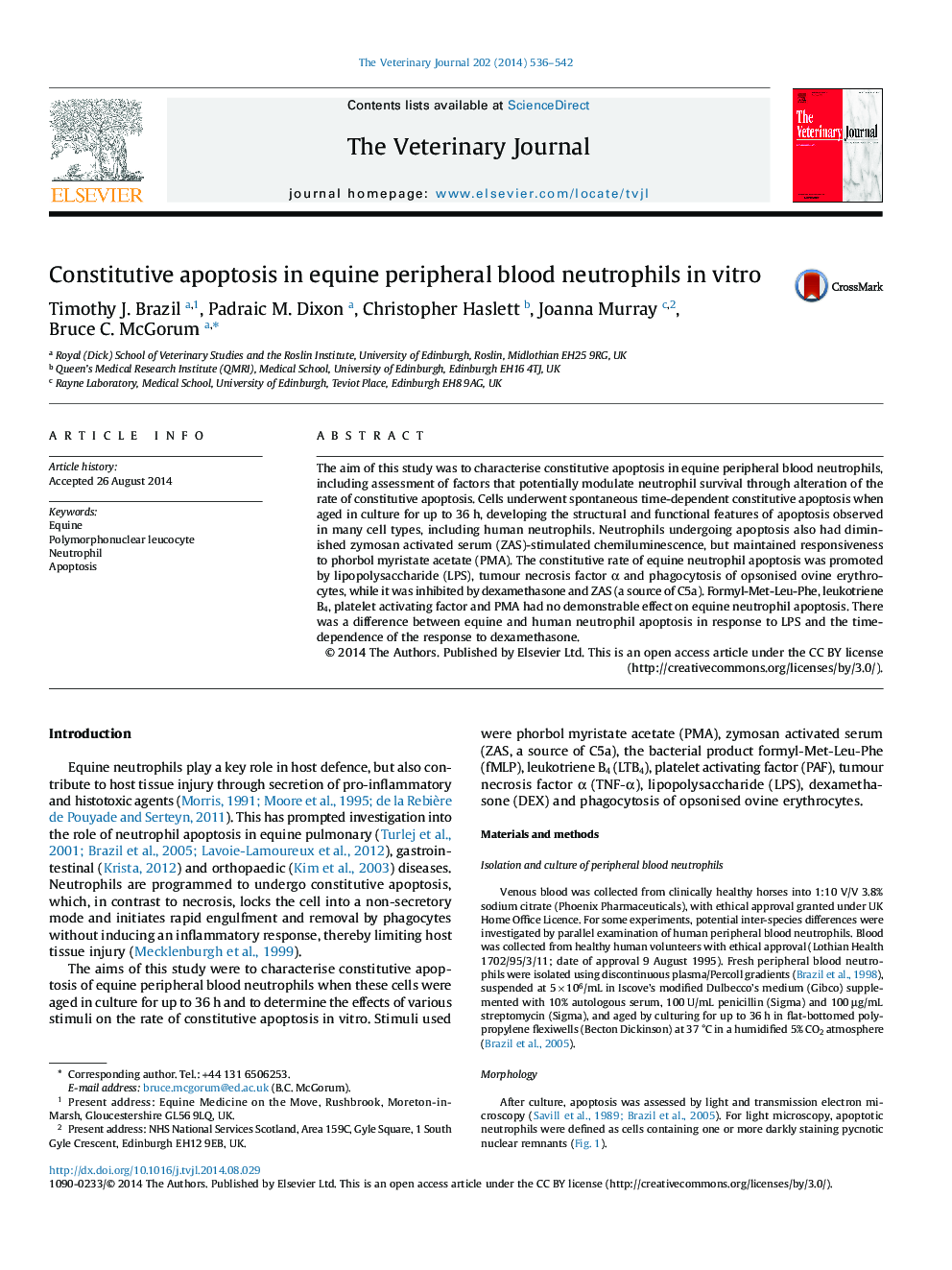| Article ID | Journal | Published Year | Pages | File Type |
|---|---|---|---|---|
| 5797789 | The Veterinary Journal | 2014 | 7 Pages |
â¢Equine peripheral blood neutrophils underwent spontaneous time-dependent constitutive apoptosis when aged in culture for up to 36âh.â¢Equine neutrophils undergoing apoptosis develop the structural and functional features of apoptosis observed in many cell types, including human neutrophils.â¢Neutrophils undergoing apoptosis had diminished zymosan activated serum-stimulated chemiluminescence, but maintained responsiveness to phorbol myristate acetate.â¢The constitutive rate of neutrophil apoptosis was promoted by lipopolysaccharide, tumour necrosis factor α and phagocytosis of opsonised ovine erythrocytes, while it was inhibited by dexamethasone and ZAS (a source of C5a).â¢Equine and human neutrophil apoptosis differed in terms of responses to lipopolysaccharide and in the time-dependence of the response to dexamethasone.
The aim of this study was to characterise constitutive apoptosis in equine peripheral blood neutrophils, including assessment of factors that potentially modulate neutrophil survival through alteration of the rate of constitutive apoptosis. Cells underwent spontaneous time-dependent constitutive apoptosis when aged in culture for up to 36âh, developing the structural and functional features of apoptosis observed in many cell types, including human neutrophils. Neutrophils undergoing apoptosis also had diminished zymosan activated serum (ZAS)-stimulated chemiluminescence, but maintained responsiveness to phorbol myristate acetate (PMA). The constitutive rate of equine neutrophil apoptosis was promoted by lipopolysaccharide (LPS), tumour necrosis factor α and phagocytosis of opsonised ovine erythrocytes, while it was inhibited by dexamethasone and ZAS (a source of C5a). Formyl-Met-Leu-Phe, leukotriene B4, platelet activating factor and PMA had no demonstrable effect on equine neutrophil apoptosis. There was a difference between equine and human neutrophil apoptosis in response to LPS and the time-dependence of the response to dexamethasone.
